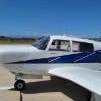Search the Community
Showing results for tags 'electric aircraft'.
-
aviatoreb has posted this on a different topic, and I think it should be a new topic … and one I'm very interested in it. We'll see how this goes @aviatoreb Great post! I'll see if I can get the history from the other thread. Thanks! Let's turn this discussion properly fully modern. Forget avgas lycosaurus or conty. Forget turbine as they fuel specifics aren't great although they are fantastically reliable and high power/fast. Forget diesel since those were not meant to be turbo boosted for high altitude ops and they are complicated - even though in practice a Mercedes diesel ala Diamond is enticing.... Electric! I will buy a new airplane when I can buy an electric airplane that has the range, speed, and reliability I expect in an airplane worthy of 500-700k of my hard earned dollars. I think that will be in about 10 years when the technology finally catches up? (In current dollars by then). Actually I would be happy with hybrid electric. You know the deal - small gas engine of some kind runs a generator that charges a battery. For take off you let both the gas and the electric motor fuel the prop for high take off power. Then its all electric (charging) for cruise. You get the reliability plausibly of an electric system, with a gas engine as backup - or anyway this is a twin engine reliability in a single shaft. And plausibly fantastic range.... It could be very high power too. Let it be plug in electric so that for short flights you can run entirely on what charge you can draw out of the all - so for some of your flying its pennies per mile. Literally pennies per mile of "fuel" cost. Electric is coming - its just a matter of time. Here is a potential cape air electric air airplane. (Cape air flies around here - remember the tv show wings and their Cessna 402s? I have been on that very exact airplane - it has a sticker on it that says, as seen on wings). https://www.wbur.org/earthwhile/2019/08/08/cape-air-eviation-alice-electric-plane That's what I want.... but shaped like a Mooney.
- 185 replies
-
- 2
-

-

-
- electric aircraft
- electric motor
-
(and 2 more)
Tagged with:
-
I couldn’t help wanting to share this article about Uber’s delusions of grandeur about trying to get an aircraft designed, certified and running a 135 operation in two years. I couldn’t help but shake my head (Hate to use that phrase} while reading this. Am I the only one that thinks they’re off by about 10 years? Uber has obviously done ZERO research about the FAA. https://phys.org/news/2017-11-uber-sleek-taxi.html?utm_source=vertical-daily-news-news-from-the-web&utm_campaign=vertical-daily-news&utm_medium=email&utm_term=news-from-the-web&utm_content=V1 Uber says it will bring its flying taxis to Los Angeles in 2020 (Update) November 8, 2017 by Tracey Lien, Los Angeles Times In just over two years, Uber says it will let commuters soar over Los Angeles' snarled traffic in flying taxis. The ride-hailing firm announced Wednesday that L.A. will be one of the first cities served by UberAir, which it says will begin ferrying passengers across the region in electric aircraft in 2020. Aviation manufacturers such as Embraer, Bell Helicopter, Pipistrel, Aurora Flight Sciences, and Mooney Aviation will supply and pilot the aircraft. Uber will operate the software that passengers use to book a trip and take a commission, much like with Uber rides on the ground. "We're trying to work with cities in the early days who are interested in partnering to make it happen, while knowing that there will be pitfalls along the way," said Jeff Holden, Uber's chief product officer, explaining why the company chose Los Angeles and Dallas as the first cities to test the service. "L.A. is a model city for this in that it's highly congested from a traffic perspective, and there's not a great mass transit relief on the horizon," Holden said. UberAir differs from UberChopper, a helicopter service the company has in the past offered during events such as the Coachella music festival, or during summertime for trips between New York City and the Hamptons. Rather than offering the service as a luxury product (trips to Coachella Valley from Los Angeles cost passengers $4,170 each way), Uber envisions UberAir as a commuter option, with fares comparable to taking an UberX car ride. The efficiency of electric aircraft brings "the price point down dramatically" compared with helicopters, Holden said. Just like with self-driving vehicles, Uber says it plans to eventually develop aircraft that fly themselves - removing the cost of a pilot and subsequently lowering fares. By the 2028 Olympics, Holden said, the company believes Angelenos will be making "heavy use" of UberAir. When the service is in full swing, he anticipates that "tens of thousands" of flights will be performed each day across the city. The city of Los Angeles has shown initial support for the project, with Mayor Eric Garcetti saying L.A. is the "perfect testing ground for this new technology." But a spokesperson for the mayor said conversations about regulation, environmental effects and zoning had not yet started. Designs for the aircraft - which differ from helicopters in appearance, technical features, efficiency and fuel consumption - are yet to be finalized. Proposed take-off and landing zones equipped with aircraft charging stations have not yet been built. In a white paper published last year, Uber outlined hurdles the company is likely to face, including infrastructure challenges, pilot training and certification and air traffic concerns. The company has taken steps to address some of those issues: It announced Wednesday that it signed an agreement with real estate developer Sandstone Properties to build take-off and landing hubs at Los Angeles International Airport and in downtown L.A., Santa Monica and Sherman Oaks in time for a 2020 launch. The company has also partnered with NASA to develop new unmanned traffic management systems intended to enable appropriate air traffic control for aircraft flying at low altitudes in urban environments. Despite the momentum behind the project, Jim Harris, a partner at Bain & Co. who leads the firm's aerospace and defense practice, said the regulatory timeline tends to be longer than companies expect. Certification from the Federal Aviation Administration for commercial aircraft can include two years of rigorous testing. On top of that the company must ensure the safety and stability of the batteries that will power the aircraft. And then the company will need to win over consumers, Harris said. "When you have a pilot in the aircraft, you'll see consumer adoption pretty fast," he said. "But for some autonomous experiments, it's going to take awhile for consumers to be comfortable being in an air taxi without a pilot." Harris said he could see a commercial electric aircraft service launch within the next 10 years. But for a larger-scale service that's economically viable? "More like 15," Harris said. Read more at: https://phys.org/news/2017-11-uber-sleek-taxi.html#jCp
- 91 replies
-
- electric aircraft
- flying taxis
-
(and 2 more)
Tagged with:


